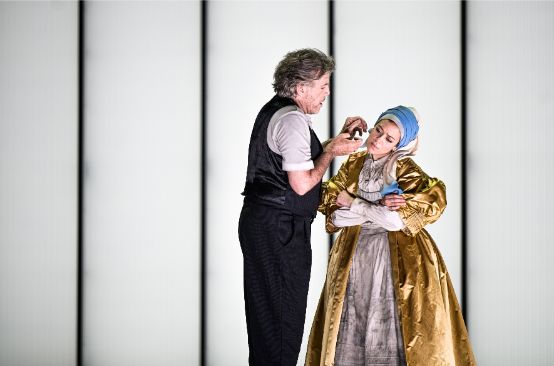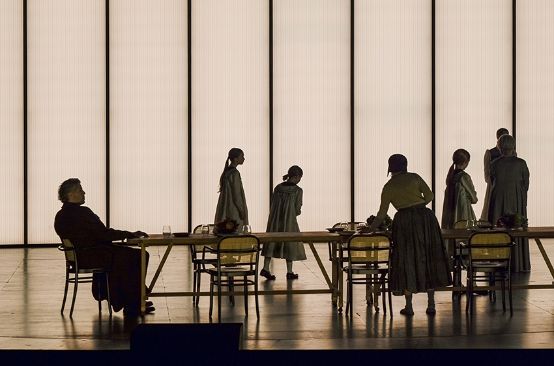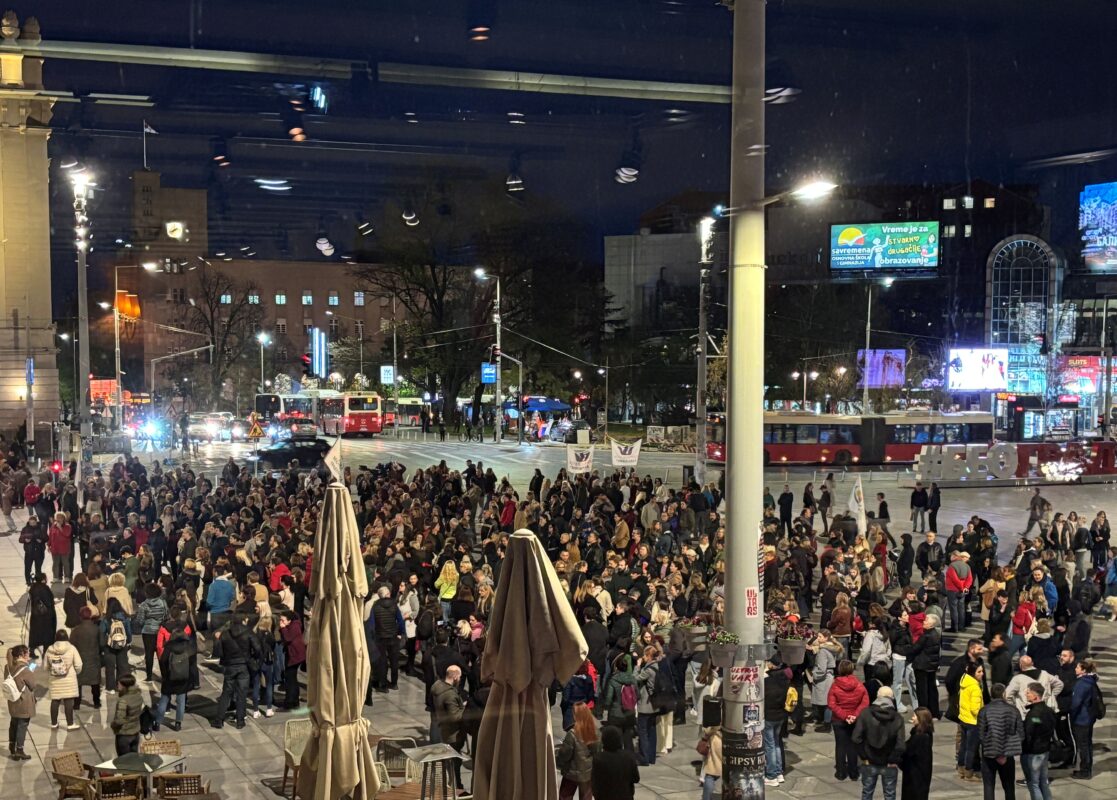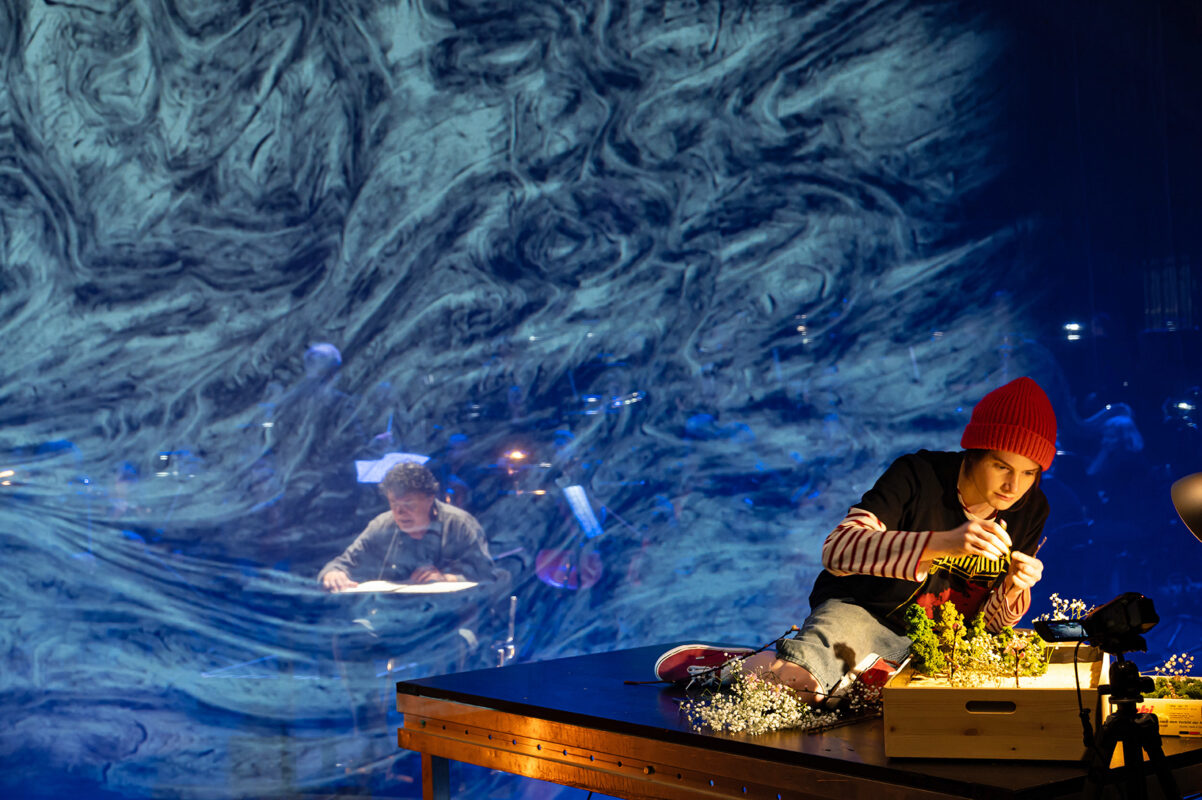Stefan Wirth's opera: stage as painting
Zurich Opera House presents the first opera by Swiss pianist and composer Stefan Wirth.

Stefan Wirth's first opera was actually due to be staged two years ago, but the outbreak of the pandemic prevented the premiere planned for May 2020. A lot has happened since then. Corona has brought the music business to a temporary standstill. The war in Ukraine is shaking Europe to its foundations. In these times of crisis, people may not necessarily expect art to be relevant to society, but they do expect it to be relevant. The new, three-act opera Girl with a Pearl Earringwhich has made it to the main stage of the Zurich Opera House, seems a little out of date in 2022. The undramatic material, which is based on Tracy Chevalier's 1999 novel of the same name - inspired by Jan Vermeer's well-known portrait Girl with the pearl earring (1665) - is told with little tension (English libretto: Philip Littell). Even the oppressive atmosphere and the problematic power relations in the Vermeer household, which can be experienced in Peter Webber's film adaptation of the material, for example, can hardly be felt in Stefan Wirth's musical realization, so that the two-hour evening becomes too lengthy in the long run. And moves in circles like Andrew Lieberman's revolving stage.
Tracy Chevalier has given the girl portrayed a story and a name. Griet arrives as a maid in the stately home, which is dominated by Vermeer's mother-in-law and landlady Maria Thins. Catharina Vermeer is pregnant, in a bad mood and jealous of the young woman. Griet helps the reclusive painter, who is under pressure to succeed, to mix colors and ends up posing for the painting in which she wears Vermeer's wife's pearl earrings. The author tells the story entirely from Griet's point of view. And the composer adopts this perspective. The young American soprano Lauren Snouffer is on stage almost continuously. With her crystal-clear, agile, high-pitched soprano, this Griet is a sympathetic figure from the very beginning. She fills the cantilenas that Wirth has written for her with warmth.
A stream of sound in a spartan production
Melos is found almost exclusively in the vocal parts. Stefan Wirth uses a large symphony orchestra without electronics, which he enriches with a variety of percussion, two harps, piano, harpsichord and celesta. There is also plenty of room for sounds, such as the crackling of paper, Griet sharpening her knife at the beginning, the strings playing with the wood of the bow or the sibilants in the wind instruments. It is also the orchestra in which the continuous narrative flow begins, which knows no pauses. Similar to Alban Berg's music of transformation, the orchestral interludes link the scenes together, even if Wirth's music only rarely develops similar plasticity. Instrumental effects such as double basses attacking in the lower register are repeated. Wirth's small-scale, complex, sometimes polyrhythmically constructed music is set with clean craftsmanship and takes the comprehensibility of the text into consideration. Here you can sense the theater musician who has already worked with Frank Castorf and Christoph Marthaler. But Wirth's flat sounds remain mostly unapproachable. It lacks a pulse, it also lacks tonal refinement and exciting color mixtures. It is certainly not the fault of the Philharmonia Zurich and the clearly structured conductor Peter Rundel that there is no real pull in the orchestra pit on this highly applauded premiere evening.
-

Jan Vermeer (Thomas Hampson) and Griet (Lauren Snouffer) and extras. Photo: Toni Suter/OHZ
Ted Huffman's spartan, generally unimaginative staging also does little to help the music. Colorful historicity can only be experienced in Annemarie Woods' costumes. Otherwise, the mostly empty stage is dominated by a cool black and white aesthetic in which the story is told conventionally. The director freezes some scenes into still images, so that the stage itself becomes a painting for a moment. Scenic escalations such as the attempted rape by the patron Van Ruijven (Iain Milne) hardly create any tension. You can always guess what is coming. Thomas Hampson also fails to develop a clear profile as Jan Vermeer in this constantly revolving setting with his lyrical baritone. Vermeer's relationship with his wife Catharina (present: Laura Aikin) is equally lacking in contours. And Liliana Nikiteanu as Maria Thins also remains colorless. In the role of Tanneke, Irène Friedli is a smart housemaid with a clear voice, Yannick Debus plays Griet's butcher friend Pieter with the necessary simplicity, Lisa Tatin sings the nagging children with a crystalline, coloratura-sure soprano. At the end, Griet is left alone with the pearl earrings, which she wants to sell. They have not brought her any luck. And even after two hours, we still don't know exactly who this young woman is.
Performances until May 8, 2022








